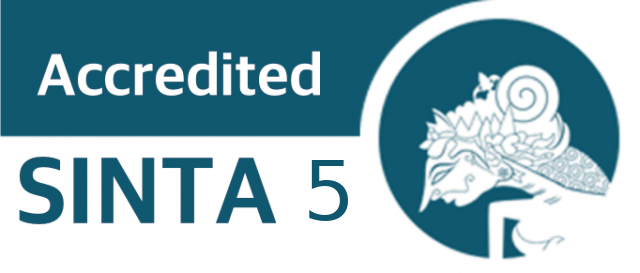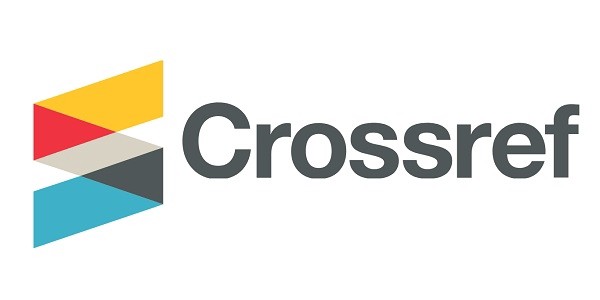LITERATUR REVIEW: PERAN CENDAWAN NEMATOFAGUS TERHADAP NEMATODA PARASIT
DOI:
https://doi.org/10.37304/jkupr.v10i2.5634Keywords:
fungi, nematophagous, nematodeAbstract
Nematofagus is a soil fungus that can reduce nematode worms and act as a biocontrol. This study aims to determine the type of nematofagus fungus that can reduce parasitic nematodes through a systematic review. The data sources in this study were obtained from google scholar, and NCBI. The results obtained were seven articles stating that the fungus Duddingtonia flagrans was able to kill nematode worms at stage L3, and three journals showed the fungus Pochonia Chlamydosporia could control nematode parasitic worm larvae. Next was the fungus Chysosporium spp, the fungus Trichoderma spp, and Purpureocillium lilacinum. Various types of nematofagus-reduced nematode parasites were Duddingtonia flagrans and Pochonia Chlamydosporia. Fungi have a role that is considered effective in reducing and controlling nematode parasites and can be used as biocontrol.
Downloads
References
Ahmad R. Pemanfaatan cendawan dan produknya untuk peningkatan produksi hasil peternakan. Wartazoa [Internet]. 2011;21(30):81–90. Available from: http://kalteng.litbang.pertanian.go.id/eng/pdf/all-pdf/peternakan/fullteks/wartazoa/wazo212-4.pdf
Sandy S, Sasto IHS, Fitriana E, Natalia EI, Penelitian B, Papua K, et al. Faktor-Faktor Risiko yang Berhubungan dengan Kejadian Taeniasis dan Sistiserkosis di Papua Barat Risk Factors Associated with Taeniasis and Cysticercosis in West Papua Waktu dan Lokasi Penelitian. 2019;1–12.
Bedah S, Nurdiani CU, Maulidah M. Angka kecacingan pada siswa kelas 3-5 SDN Multatuli Rangkasbitung Kabupaten Lebak Banten. Artik Ilmu Kesehat. 2016;8(1):56–62.
Suharmiati S, Rochmansyah R. Mengungkap Kejadian Infeksi Kecacingan Pada Anak Sekolah Dasar (Studi Etnografi Di Desa Taramanu Kabupaten Sumba Barat). Bul Penelit Sist Kesehat. 2018;21(3):211–7.
Utara K, Tahun S. Journal of Vocational Health Studies prevalence of intestinal helminthiasis in children at north keputran surabaya AT 2017. 2018;01:117–20.
Mohpul A, Jabal AR, Balyas AB. Prevalensi Cacing Parasitik Pada Anak Sekolah Dasar Di Kecamatan Rakumpit Kota Palangka Raya. J Med Karya Ilm Kesehat. 2020;5(2).
Bojanich M V., Basualdo JA, Giusiano G. In vitro effect of Chrysosporium indicum and Chrysosporium keratinophylum on Toxocara canis eggs. Rev Argent Microbiol. 2018;50(3):249–54.
Da Silva ME, Braga FR, De Gives PM, Uriostegui MAM, Reyes M, Soares FEDF. Efficacy of Clonostachys rosea and Duddingtonia flagrans in Reducing the Haemonchus contortus Infective Larvae. Biomed Res Int. 2015;2015.
Ahmad RZ. Pemanfaatan cendawan dan produknya untuk peningkatan produksi hasil peternakan. Wartazoa. 2011;21(30):81–90.
Araujo JM, Araújo JV de, Braga FR, Ferreira SR, Tavela A de O. Predatory activity of chlamydospores of the fungusPochonia chlamydosporia on Toxocara caniseggs under laboratory conditions. Rev Bras Parasitol Veterinária. 2013;22(1):171–4.
Braga FR, Araújo JV, Tavela A de O, Vilela VLR, Soares FE de F, Araujo JM. First report of interaction of nematophagous fungi onLibyostrongylus douglassii (Nematoda: Trichostrongylidae). Rev Bras Parasitol Veterinária. 2013;22(1):147–51.
Ahmad RZ, Satrija F, Sukarno N, Pasaribu FH. dan Saccharomyces cerevisiae dalam Mereduksi Larva Infektif Haemonchus contortus. J Vet. 2012;13(1):70–6.
Da Silva ME, Braga FR, De Gives PM, Uriostegui MAM, Reyes M, Soares FEDF. Efficacy of Clonostachys rosea and Duddingtonia flagrans in Reducing the Haemonchus contortus Infective Larvae. Biomed Res Int. 2015;2015.
Zarrin M, Rahdar M, Gholamian A. Biological control of the nematode infective larvae of Trichostrongylidae family with filamentous fungi. Jundishapur J Microbiol. 2015;8(3):21–4.
Yang J, Wang L, Ji X, Feng Y, Li X, Zou C. Genomic and proteomic analyses of the fungus arthrobotrys oligospora provide insights into nematode-trap formation. PLoS Pathog. 2011;7(9).
MendozCe-Gives P, López-Arellano ME, Aguilar-Marcelino L, Olazarán-Jenkins S, Reyes-Guerrero D, Ramírez-Várgas G. WITHDRAWN: The nematophagous fungus Duddingtonia flagrans reduces the gastrointestinal parasitic nematode larvae population in faeces of orally treated calves maintained under tropical conditions. Dose/Response assessment. Vet Parasitol. 2018;(xxxx).
Assis RCL, Luns FD, Araújo J V., Braga FR, Assis RL, Marcelino JL. Comparison between the action of nematode predatory fungi Duddingtonia flagrans and Monacrosporium thaumasium in the biological control of bovine gastrointestinal nematodiasis in tropical southeastern Brazil. Vet Parasitol. 2013;193(1–3):134–40.
De Oliveira LDSSCB, Dias FGS, Melo ALT, De Carvalho LM, Silva EN, De Araújo JV. Bioverm® in the control of nematodes in beef cattle raised in the central-west region of Brazil. Pathogens. 2021;10(5):1–9.
Araujo JM, Araújo JV de, Braga FR, Ferreira SR, Tavela A de O. Predatory activity of chlamydospores of the fungusPochonia chlamydosporia on Toxocara caniseggs under laboratory conditions. Rev Bras Parasitol Veterinária. 2013;22(1):171–4.
Thapa S, Thamsborg SM, Wang R, Meyling N V., Dalgaard TS, Petersen HH. Effect of the nematophagous fungus Pochonia chlamydosporia on soil content of ascarid eggs and infection levels in exposed hens. Parasites and Vectors. 2018;11(1):1–11.
Hofstätter BDM, Oliveira da Silva Fonseca A, de Souza Maia Filho F, de Souza Silveira J, Persici BM, Pötter L, et al. Efecto de los extractos de los hongos Paecilomyces lilacinus, Trichoderma harzianum y Trichoderma virens en la eclosionabilidad de huevos de Ancylostoma. Rev Iberoam Micol [Internet]. 2017;34(1):28–31. Available from: http://dx.doi.org/10.1016/j.riam.2016.04.004
Maia Filho F de S, Fonseca A de O da S, Valente J de SS, Baptista CT, Moreira A da S, Botton S de A. Exposure of Toxocara canis eggs to Purpureocillium lilacinum as a biocontrol strategy: an experimental model evaluation. Rev Bras Parasitol Vet = Brazilian J Vet Parasitol Orgao Of do Col Bras Parasitol Vet. 2019;28(1):91–6.
Zarrin M, Rahdar M, Gholamian A. Biological control of the nematode infective larvae of Trichostrongylidae family with filamentous fungi. Jundishapur J Microbiol. 2015;8(3):21–4
Ahmad RZ. Paecilomyces lilacinus and Verticillium chlamydosporium Fungi as Biological Control of Fasciolosis. Indones Bull Anim Vet Sci. 2014;23(3):135–41.





















